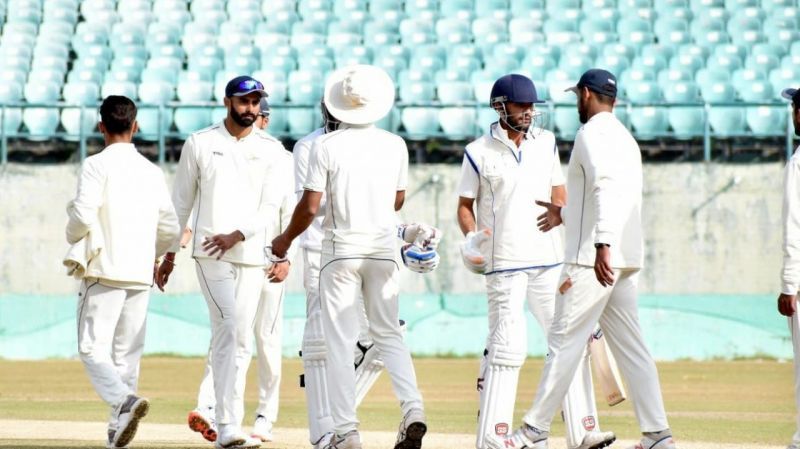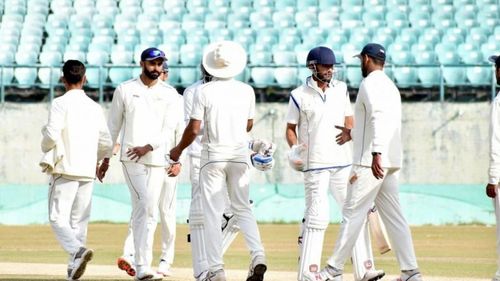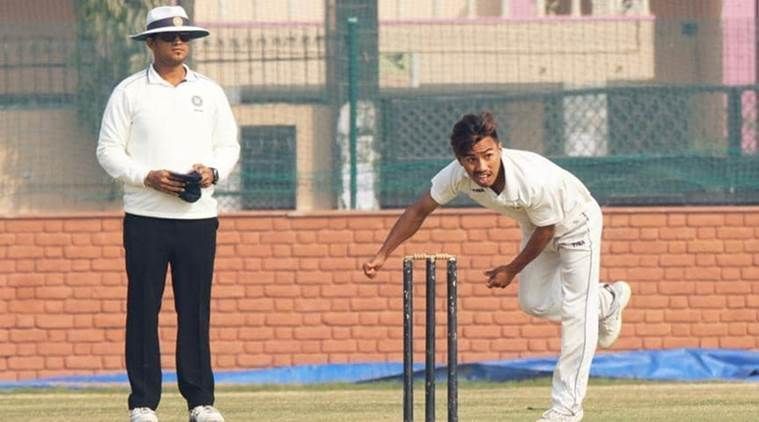
Ranji Trophy: The Northeast cricketing paradox (Opinion)

Inclusiveness is the order of the day for global cricketing administration. Be it BCCI, ECB or even ICC, all cricketing bodies around the globe are trying their level best to spread the game of cricket to a broader audience base.
The decision by ICC to grant T20I status to all cricket playing nations back in 2018 was one of the most significant moves to enhance the interest of the global audience in the game.
Working in line with the rest of the cricketing bodies across the world and keeping the spirit of inclusiveness in mind, BCCI introduced six new teams from the Northeastern states of India into the 2018-19 Ranji Trophy season. The new teams added were Manipur, Arunachal Pradesh, Mizoram, Sikkim, Nagaland, and Meghalaya.
As a result, for the first time in the 85-year-old history of the tournament, a total of 37 teams took part in the country's most premier domestic competition. The supreme court-appointed Committee of Administrators (CoA) felt that these were encouraging signs for the game, as cricket was spreading to every nook and corner of the country.
Also see – Under 19 world cup most runs
Undoubtedly, this was a grand opportunity for the states to improve their game by playing against the heavyweight teams of the domestic circuit like Mumbai, Karnataka or Delhi. After all, a few players deservingly earned this opportunity to represent their respective states at the most prestigious domestic tournament on the back of some exceptional performances at the Vijay Hazare Trophy as well as the Syed Mushtaq Ali Trophy, in the past couple of seasons.
The bright side: Resurrection of careers
The inclusion of new state teams into the fold of Ranji Trophy has resurrected quite a few stagnant domestic careers. A domestic cricket giant like Vinay Kumar shifted base to Puducherry after a 15-year long association with Karnataka before the 2019-20 season.
The veteran cricketer has found great motivation to play for his new team and is in top form with 23 wickets from 4 matches. He has single-handedly taken Puducherry to the top of the Plate group and has inspired young budding players from Puducherry to prosper under his guidance.
Another Karnataka cricket veteran, Abrar Kazi decided to ply his trade for Nagaland from the 2018-19 Ranji season. His performance reached good heights in the new team environment, as he scored 814 runs at a stupendous average of 74 to go along with 34 wickets in the season.
Irfan Pathan's contributions to the rise of cricket in Jammu Kashmir is well documented as their Ranji team captain and mentor. Pathan's influence on the team's cricketing standards is visible in their consistent improvement in performances at the Ranji Trophy level since the 2015-16 domestic season.
The disappointment
All the excitement regarding the 2018-19 edition of the Ranji Trophy plummeted as the tournament got underway. The newly added teams found it extremely difficult to replicate their limited-overs performance in red-ball cricket.
As a consequence, the competition started witnessing a lot of one-sided matches - a sore sight for a tournament with such a rich vein of tradition. At a time when global cricket is trying its best to bring more spectators into Test cricket, it's quite disappointing that BCCI's premiere 4-day domestic tournament is yielding one-sided matches, thus discouraging multi-day cricket viewership.
A brief look at the numbers for the last season of Ranji Trophy would reveal a far more grim story for 4-day domestic cricket in India. Out of 160 four day matches played across the 2018-19 Ranji season, 33 involved at least one of the six new entrants.
24 out of those 33 matches, i.e. 73% of the matches played by new teams had a victory margin of either more than 200 runs or greater than 7 wickets. This translates to around 15% of the entire Ranji season becoming one-sided.
To make matters worse, 12 out of those 24 matches were innings victories. For a domestic competition that has boasted of close encounters and enthralling knockout games over decades, it is a matter of ignominy that 15% of its entire season would comprise of lopsided encounters.
Future prospect

It needs to be noted that despite the lack of competition in the games involving the new teams, there were some notable individual performances from a couple of youngsters.
Rex Singh, an impressive tearaway pacer from Imphal, Manipur recorded astounding bowling figures of 8-22 against Mizoram. Paras Sehrawat, a young wicketkeeper-batsman from Nagaland grafted his way to a magnificent century against Arunachal Pradesh. Hence, cricketing talent is abundant in the North-Eastern states of the country. But unfortunately, the number of such prominent players is not enough to allow state-wise teams at the present moment.
The probable solution
The probable solution to this conundrum can be to have one or two assimilated teams from the northeastern states in the Ranji trophy, to begin with. North-East I & North East-II can be two teams in the competition comprising of the best players from Manipur, Arunachal Pradesh, Mizoram, Sikkim, Nagaland, and Meghalaya.
This would make the said teams competitive and take them at par with the lofty standards of four-day domestic cricket, thus eliminating lopsided encounters. Senior domestic cricketers, looking for a fresh new team environment to play in, can shift to North-East I or II, to mentor the vast pool of young talent available in those teams.
In the meantime, all these states can have representative teams in age-group cricket. Manipur, Arunachal Pradesh, Mizoram, Sikkim, Nagaland, and Meghalaya can focus on performing well in Cooch Behar Trophy as well as the Col CK Naidu Trophy - the two most prominent age-group tournaments held in the country.
Both these tournaments will give their young players enough exposure to red-ball cricket, which in turn will help the players to develop their game and come back stronger in Ranji Trophy.
India has one of the strongest domestic structures in the cricketing world and that is one of the biggest driving factors behind the constant supply of talented players who go on to represent the Indian national team.
The focus should be such that new teams are gradually eased into the domestic cricket structure rather than dropping them suddenly to Ranji level cricket. Yes, cricket as a game needs to connect to the masses.
Going forward, the game needs to cater to a much broader global audience. But the soul and standard of cricket should not be tinkered with, in a bid to popularize the game for commercial benefits. At best, cricket with all its finesse intact can be re-packaged to suit the global commercial demands surrounding the game.